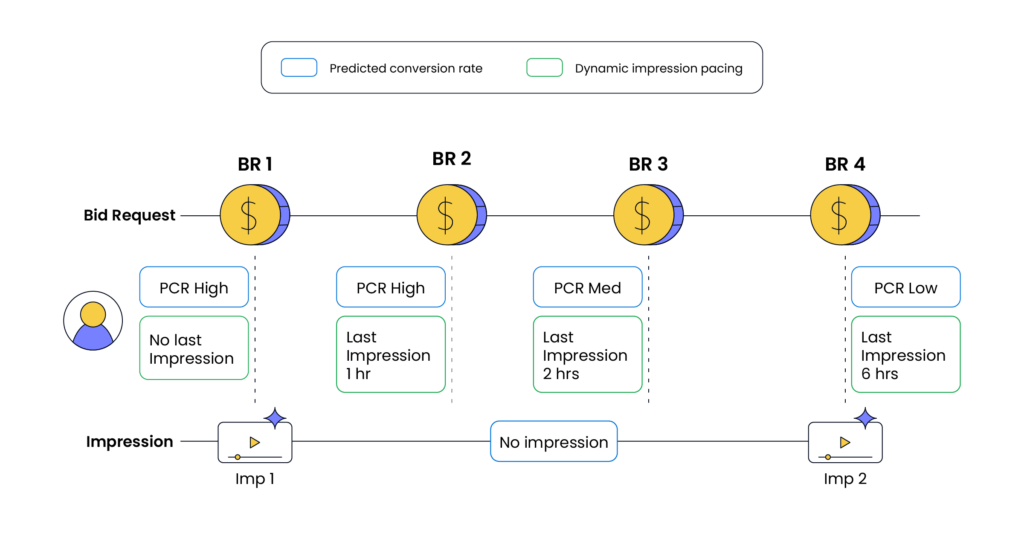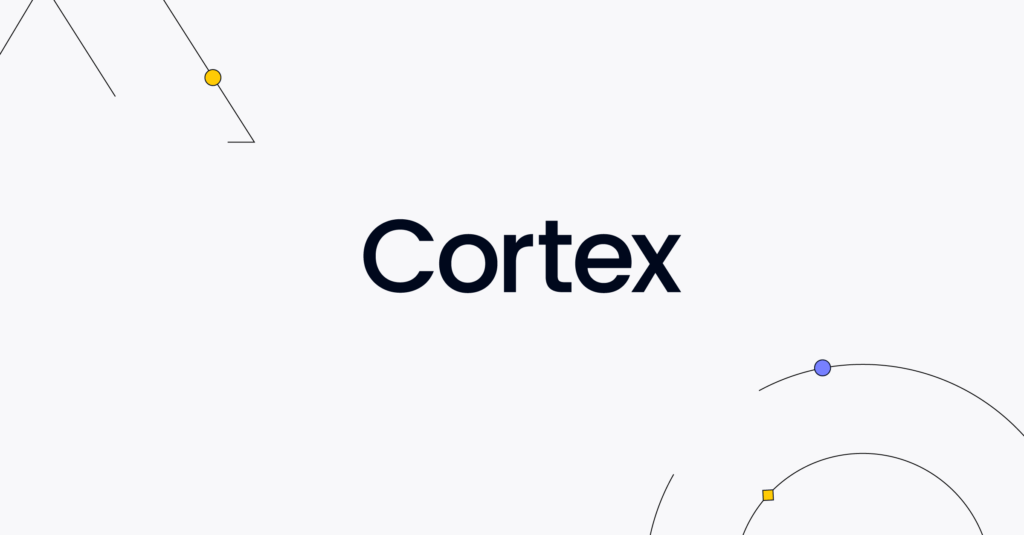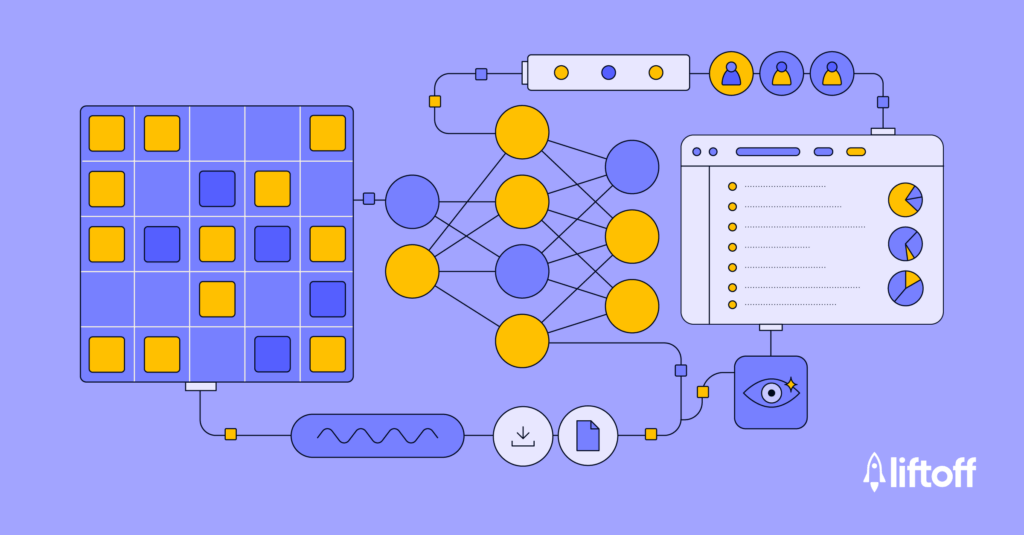
Smarter Spending, Stronger Results: The Power of Dynamic Impression Pacing
In mobile advertising, timing and efficiency are everything. Show an ad too soon, and you risk paying for impressions that won’t convert. Wait too long, and you might miss a valuable opportunity. For years, advertisers have relied on static impression pacing—fixed time intervals between ads—to manage budgets and control frequency. But advertisers now have a smarter alternative.
Advertisers find that a one-size-fits-all approach like static impression pacing can limit opportunity. A hard one-hour pacing rule treats every user the same, regardless of how likely they are to convert. But what if a high-value user is primed to engage, and you’re locked out from bidding due to a rigid pacing rule? Conversely, what if low-value impressions consume too much of your budget, preventing you from reaching the right users?
This is also where incrementality comes into play. More advertisers are turning to media mix models (MMMs) and advanced measurement techniques to understand the true impact of their ad spend. Simply serving more impressions doesn’t always mean better results—what matters is ensuring each additional impression is driving new conversions. A smarter approach to impression pacing can help advertisers focus on high-value opportunities rather than repeatedly serving ads to the same users with diminishing returns.
That’s why Liftoff built Dynamic Impression Pacing—an ML-powered approach layered on top of existing pacing models that ensures each impression has real value, reducing wasted spend while maximizing incremental growth.
Why Static Impression Pacing Falls Short
Traditional static pacing settings operate on fixed rules. Suppose an advertiser sets an impression interval at one hour. In that case, the system will serve the next impression at that time—regardless of whether the previous impression is still likely to convert. This rigid approach can lead to wasted impressions and missed efficiency gains.
This creates two major inefficiencies:
- Inefficient impression timing: Static pacing may serve follow-up impressions too soon, even when the previous impression still has a strong chance of converting, resulting in wasted spend.
- Inability to adapt to real-time behavior: Static pacing treats all impressions equally instead of adjusting based on engagement signals and conversion likelihood.
How Machine Learning Transforms Impression Pacing
Instead of relying on fixed intervals, Dynamic Impression Pacing takes a real-time, ML-driven approach.
Here’s how it works:
- Evaluates every impression opportunity in real-time
- Considers multiple factors, including:
- The user’s likelihood to convert
- The recency of previous impressions
- The expected impact on revenue
- Adjusts bid pricing dynamically—increasing bids for high-value impressions, pacing lower-value users over a longer period
This ensures smarter spending by focusing on impressions that drive real results.
Take a look at this example of how Dynamic Impression Pacing works:

After the first impression (Imp1) is served, the system continuously assesses whether another impression is needed. Instead of automatically serving the next impression at a fixed interval, Dynamic Impression Pacing assesses the predicted conversion rate (PCR) of the user. If the model determines that the previous impression still has a strong likelihood of converting, it delays the next impression to avoid unnecessary spend. As time passes and the probability of conversion declines, the system re-evaluates whether another impression should be served, ensuring that each bid aligns with real-time user engagement and value.
Key Takeaway: Advertisers running high-volume campaigns can benefit the most from ML-driven pacing, as it dynamically balances budget distribution across different user segments.
How Dynamic Pacing Improves Efficiency
We put Dynamic Impression Pacing to the test with a four-week A/B experiment, and the results were clear:
- Fewer wasted impressions – Impression volume decreased by 10%, leading to more efficient budget allocation and lower overall media costs.
- Higher-value users reached – The system prioritized high-intent users, increasing install rates while maintaining ROAS.
- Smarter spending – The model dynamically adjusted pricing, leading to better efficiency and a more strategic budget allocation.
Most importantly, campaigns with shorter pacing intervals (<one hour) saw the greatest benefits, demonstrating the effectiveness of a dynamic approach.
Key Takeaway: Instead of relying on rigid static rules, let an ML-based system optimize your pacing to drive more conversions.
What This Means for Advertisers
Dynamic Impression Pacing adds a smarter, real-time layer to impression delivery—enhancing existing pacing strategies or replacing static rules entirely. Either way, advertisers gain the value of:
- Optimized spend efficiency – Reduces wasted spend on low-value impressions.
- More high-value conversions – Bids adjust dynamically to maximize engagement at the right moments.
- Smarter pacing requires less manual work – ML-driven decisions improve efficiency while reducing the need for constant adjustments.
This update is a major step forward for advertisers looking to improve ROAS and scale efficiently.
What’s Next for Dynamic Impression Pacing
Liftoff is committed to continuous innovation in ad bidding. Our next steps include:
- Further refining ML models, making impression pacing even more effective.
- Enhancing our predictive capabilities to ensure advertisers reach high-value users at the optimal time.
- Continuing performance analysis to refine pacing strategies and maximize campaign efficiency.
How Can You Get The Most Out Of Impression Pacing
Effective impression pacing isn’t about choosing between control and automation—it’s about using both strategically to drive better results. Dynamic Impression Pacing allows advertisers to maintain minimum thresholds where necessary while leveraging machine learning to optimize efficiency and performance in real time.
Whether you’re looking to fine-tune your existing pacing strategy or transition to a more dynamic approach, Liftoff can help. Want to improve ad efficiency and scale your campaigns? Learn how Dynamic Impression Pacing can maximize conversions while reducing wasted spend.


